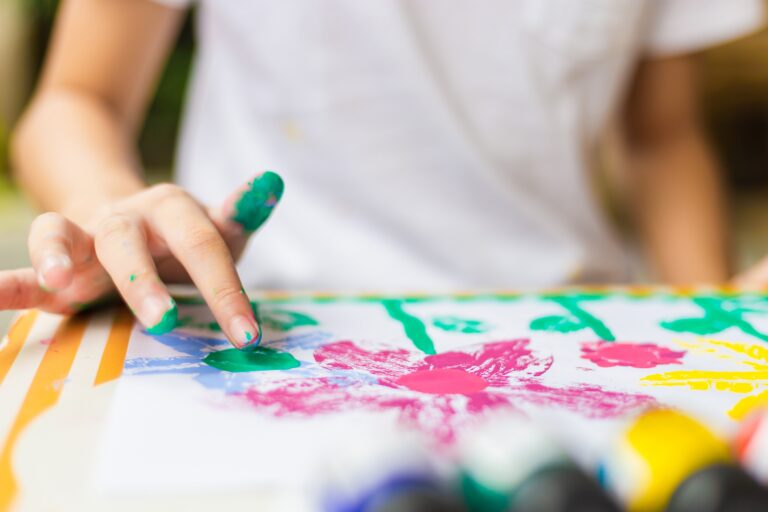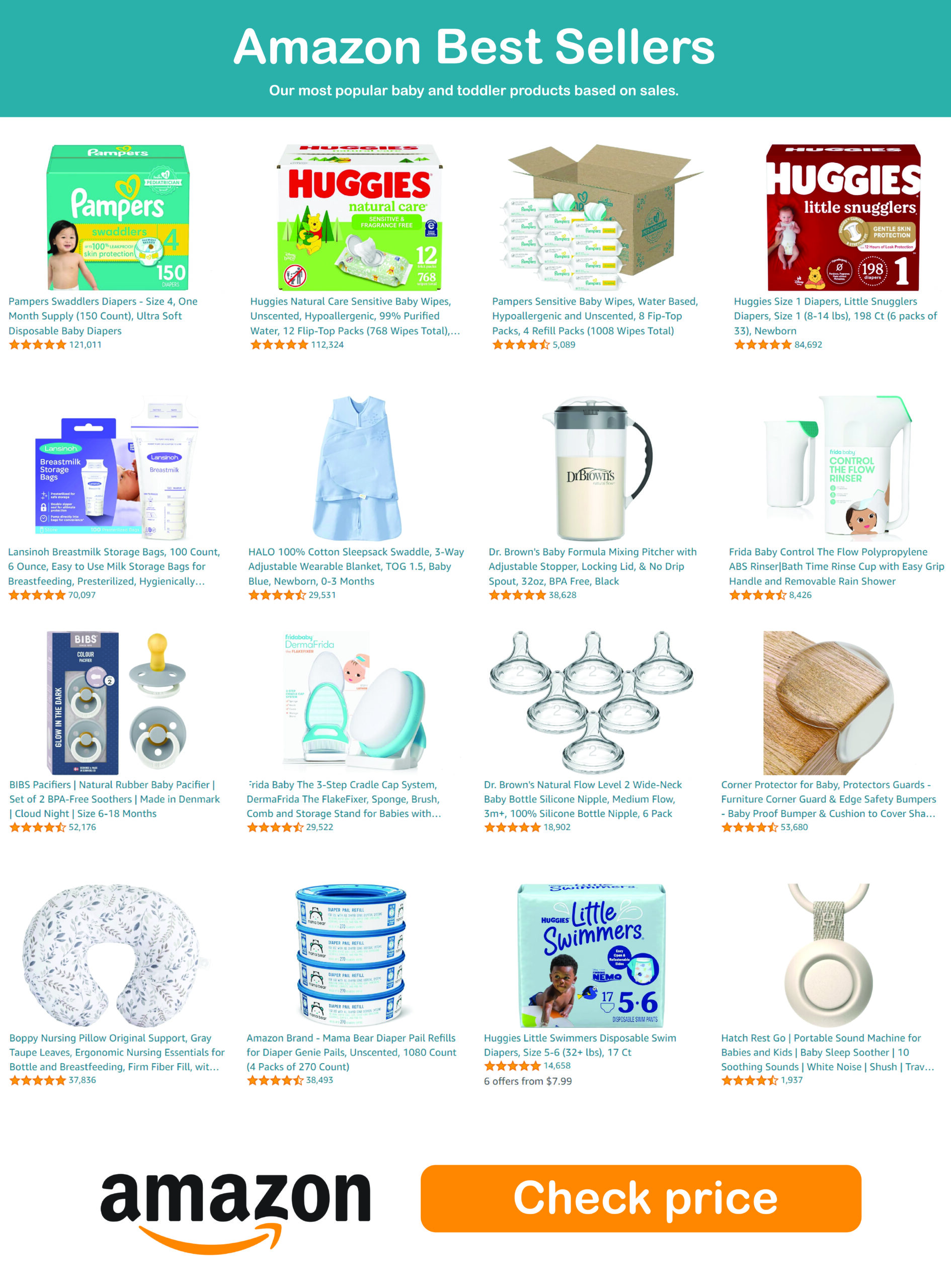Introduction to Sensory Play
As a parent, you’re always looking for ways to help your child grow and develop. One of the most effective methods for encouraging baby and toddler development is through sensory play.
Sensory play is any activity that stimulates a young child’s senses: touch, smell, taste, sight, and hearing. These activities can be as simple or as elaborate as you want, but the key is to engage your child’s attention and encourage exploration.
Sensory play is a natural part of a child’s development, as they’re constantly exploring the world around them.
As babies and toddlers interact with objects and their environment, they’re using their senses to gather information and learn about the world.
Sensory play is crucial because it helps children to develop important cognitive, physical, and emotional skills, as well as fostering a sense of curiosity and wonder.
In this essential guide, I’ll discuss the importance of sensory play in baby and toddler development, the benefits of sensory play, essential materials and toys, sensory play ideas for babies and toddlers, and how to create a sensory play space at home.
I’ll also share tips for successful sensory play sessions and safety considerations to keep in mind.
The Importance of Sensory Play in Baby and Toddler Development
Sensory play plays a critical role in baby and toddler development. As young children explore the world through their senses, they’re building important connections in their brain.
These connections help them to understand the world around them, make sense of their experiences, and develop essential skills.
For babies, sensory play is especially important as it helps them to develop their sensory systems.
Babies are born with an innate curiosity and desire to explore, and sensory play provides the perfect opportunity for them to engage with their surroundings.
Through sensory play, babies learn to process and respond to different stimuli, helping to develop their physical, cognitive, and emotional skills.
As babies grow into toddlers, sensory play continues to be crucial for their development.
Toddlers are constantly learning and refining their skills, and sensory play provides a fun and engaging platform for them to practice and develop these abilities.
Through sensory play, toddlers can enhance their problem-solving skills, language development, and social-emotional growth.
Sensory Play Benefits for Babies and Toddlers
Sensory play offers a wealth of benefits for babies and toddlers, contributing to their overall growth and development. Some of the key benefits of sensory play include:
Cognitive development: Sensory play helps children to develop important cognitive skills such as problem-solving, attention, and memory. As they explore different materials and engage in sensory activities, they’re learning to process and understand new information.
Physical development: Sensory play encourages babies and toddlers to develop their fine and gross motor skills. Activities that involve grasping, pinching, and manipulating objects help to strengthen hand muscles and improve hand-eye coordination, while larger activities like crawling and climbing promote muscle development and balance.
Language development: As children engage in sensory play, they’re exposed to new vocabulary and language concepts. Describing the textures, smells, and sounds they encounter during sensory activities helps to build their understanding of language and communication.
Social-emotional development: Sensory play provides opportunities for children to develop their social and emotional skills. As they engage with others during sensory activities, they learn to share, cooperate, and express their emotions in a healthy manner.
Creativity and imagination: Sensory play encourages children to use their imagination and creativity, as they explore new materials and engage in pretend play. This helps to foster a sense of curiosity and wonder, which is essential for lifelong learning.
Essential Sensory Play Materials and Toys
To get started with sensory play, you’ll need some basic materials and toys that are suitable for babies and toddlers. The following items are ideal for sensory play:
Textured materials: Items with different textures, such as fabric scraps, sponges, and bubble wrap, are great for sensory play. These materials can be used to create sensory bins or for touch-and-feel activities.
Natural materials: Items like sand, water, and dried beans are perfect for sensory play. These materials can be used in sensory bins or for activities like pouring and scooping.
Manipulatives: Toys like building blocks, puzzles, and shape sorters are excellent for sensory play, as they encourage children to use their fine motor skills and problem-solving abilities.
Art supplies: Materials like playdough, finger paint, and crayons are great for sensory play, as they allow children to explore different textures and colors.
Sensory toys: There are many sensory toys available on the market, designed specifically for babies and toddlers. These toys often feature different textures, sounds, and lights, making them perfect for sensory play.
Sensory Play Ideas for Babies
Sensory play for babies can be simple and easy to set up. The key is to provide age-appropriate materials and activities that are safe for your baby to explore. Here are some sensory play ideas for babies:
Tummy time on a textured mat: Encourage tummy time by creating a textured mat for your baby to explore. Use a variety of fabrics with different textures, such as soft fleece, silky satin, and bumpy corduroy, to create a sensory-rich environment.
Sensory bottles: Create sensory bottles by filling clear plastic bottles with a variety of materials, such as water and glitter, colored rice, or small toys. Seal the bottles tightly and let your baby explore the different sounds and sights as they shake and roll the bottles.
Edible paint: Allow your baby to explore their sense of taste and touch by creating edible paint using yogurt and food coloring. Spread the paint on a high chair tray or plastic mat and let your baby explore the textures and colors with their hands and mouth.
Sensory Play Ideas for Toddlers
As your child grows, you can create more complex sensory play activities that challenge their developing skills. Here are some sensory play ideas for toddlers:
Sensory bins: Fill a large container with a base material, such as sand, water, or dried beans, and add a variety of toys and objects for your toddler to explore. Provide tools like scoops, cups, and tongs to encourage fine motor skills and imaginative play.
Finger painting: Encourage your toddler to get messy with finger painting. Provide a variety of colors and textures, such as regular paint, shaving cream, or even pudding, and let your child explore their creativity.
Nature scavenger hunt: Take your toddler on a nature walk and encourage them to collect items like leaves, sticks, and rocks. When you return home, create a sensory bin with the collected items and let your child explore the different textures and shapes.
How to Create a Sensory Play Space at Home
Creating a sensory play space at home doesn’t have to be complicated or expensive. Here are some tips for setting up a sensory play area in your home:
Choose a designated space: Find a space in your home where you can set up a sensory play area, such as a corner of your living room, playroom, or even outdoors. Make sure the area is safe and easily supervised, and consider using a large plastic or waterproof mat to protect your floors.
Organize materials and toys: Use storage containers, shelves, or baskets to keep your sensory play materials and toys organized and easily accessible. This will make it easier for you and your child to find and use your sensory play items during playtime.
Create a comfortable environment: Ensure that your sensory play space is comfortable and inviting. Use soft lighting, cozy seating, and calming colors to create an environment that encourages exploration and relaxation.
Tips for Successful Sensory Play Sessions
To help make your sensory play sessions as enjoyable and beneficial as possible, consider the following tips:
Follow your child’s interests: Tailor your sensory play activities to your child’s interests and preferences. This will help to engage their attention and encourage exploration.
Be patient: Give your child plenty of time to explore and experiment during sensory play sessions. Try not to rush them or direct their play too much, as this can limit their learning opportunities.
Encourage problem-solving: Provide opportunities for your child to problem-solve and think critically during sensory play. For example, you might ask them questions, set challenges, or encourage them to find new ways to use the materials.
Model appropriate play: Demonstrate how to use the materials and engage in sensory play by playing alongside your child. This can help them to learn new skills and understand the purpose of the activity.
Sensory Play Safety Considerations
While sensory play is an important part of baby and toddler development, it’s essential to keep safety in mind. Here are some sensory play safety considerations to be aware of:
Choose age-appropriate materials and toys: Ensure that the materials and toys you provide for sensory play are age-appropriate and safe for your child. Be mindful of choking hazards and always supervise your child during playtime.
Avoid harmful substances: When creating sensory play activities, avoid using materials that could be harmful if ingested or inhaled, such as small beads, raw beans, or toxic substances.
Monitor for allergies and sensitivities: Be aware of any allergies or sensitivities your child may have and avoid using materials that could cause an adverse reaction.
Conclusion: Encouraging Sensory Play for a Well-Rounded Development
Sensory play is an essential component of baby and toddler development, offering countless benefits for cognitive, physical, language, and social-emotional growth.
By providing a variety of materials, toys, and activities that engage your child’s senses, you can help them to develop important skills and foster a lifelong love of learning.
So, get creative, have fun, and watch your little one thrive through the power of sensory play!












